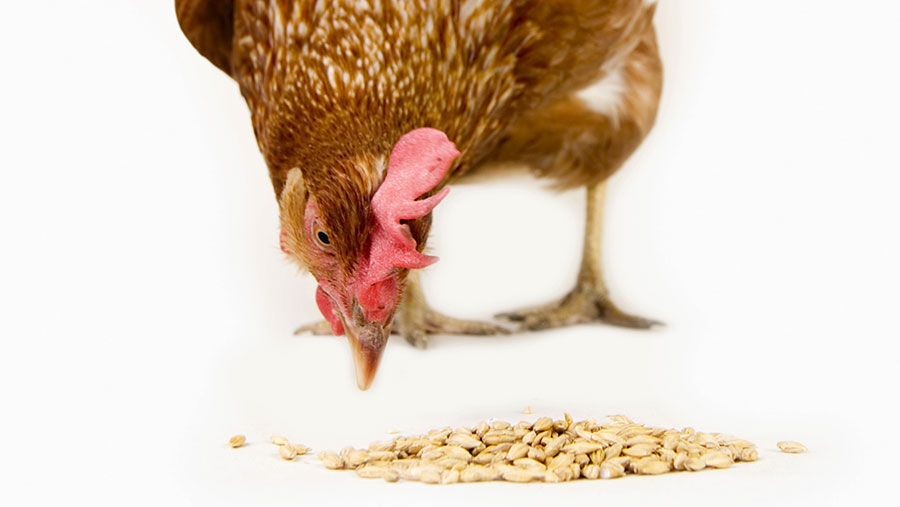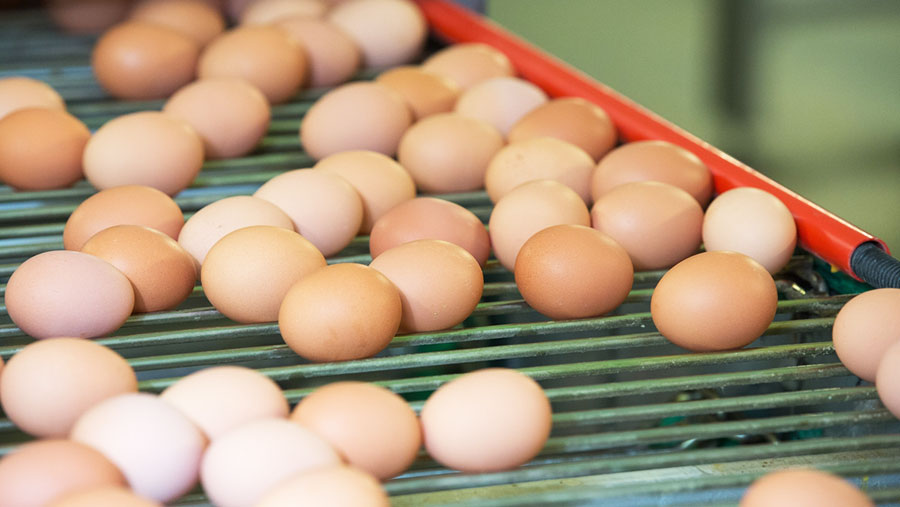How to extend late lay quality through nutrition management
 © Alfred Schauhuber/imageBROKER/REX/Shutterstock
© Alfred Schauhuber/imageBROKER/REX/Shutterstock Maintaining lay persistency, egg mass and shell quality in late lay can have a significant impact on a flock’s financial performance.
Keeping up consistent egg production in late lay requires careful management and a thoughtful nutrition strategy.
As a hen ages, both shell quality and yolk colour will decline; maintaining egg size and quality beyond 75 weeks and up to a target of 100 weeks can have a big impact on the profit a flock makes.
See also: Split-feeding proves perfect formula for eggs
“The late lay period is characterised by a slow decline in egg numbers but a steady increase in egg size,” says Aidan Leek, poultry technical manager at Trouw Nutrition. “As well as overcoming these issues, late lay management must ensure skeletal integrity is maintained and that birds remain on target bodyweight, well feathered and in good condition.
Addressing these issues requires planning right through the life of a bird.
Early body composition and weight at point of lay will influence performance at the end of life, with good skeletal development essential in supporting egg production throughout life. A useful indicator of bird condition is frame size, as measured by shank length at this stage.
Early nutrition
When birds enter the flock, nutritional strategies must allow for a rapid increase in egg numbers and support continued growth.
Modern genetics mean flocks come into production very quickly with higher peak production and heavier early egg weights, creating a higher egg mass and increased early nutrient demand Aidan Leek, Trouw Nutrition
Diets need to encourage an adequate nutrient intake in the first 10-15 weeks to ensure birds are in a positive nutrient balance for energy, amino acids and calcium in particular.
“Correct early lay feeding is as, if not more, important than anything you do in the late lay period itself.
“Modern genetics mean flocks come into production very quickly with higher peak production and heavier early egg weights, creating a higher egg mass and increased early nutrient demand,” Dr Leek says.
Failure to meet this demand will result in birds mobilising protein and energy reserves, leading to a stall in bodyweight gain or even bodyweight loss in early lay. Either will lead to a premature decline in egg output and below target egg weights.
Keeping birds in positive nutrient balance in the first 10 weeks of lay will help provide a reserve for mid/late lay egg output and improved shell quality.
In particular, restricted calcium intakes in the early lay lead to mobilisation of bone calcium reserves which do not recover adequately later. While early lay shell quality will be adequate, late lay shell quality will decline faster but this may be overcome by adjusting nutrition in late lay.
After early lay
Dr Leek advises weighing birds at least fortnightly until the point of mature weight and then monthly thereafter.
Birds losing bodyweight will drop production faster and this has the potential to severely impact late lay production.

© Tim Scrivener
He says birds in late lay should have little or no growth. If they are gaining weight, this could indicate fat deposition, which will reduce feed intake motivation, leading to lower production.
“Birds are very sensitive to energy intake and will adjust intake to meet demand. Once liveweight has been established, consider introducing lower energy feeds to help prevent fat deposition.
Trouw Nutrition has evaluated the use of of low cost structural fibre component from feed materials, such as sunflower, barley, oats, and even chopped straw.
Investigations have shown that adding these sources of fibre had no impact on feed intakes while reducing feed costs.
Gut function was also improved, increasing the potential for greater nutrient digestibility with higher structural fibre.
The minerals
Dr Leek also suggests considering nutritional additives, such as Trouw’s Presan FY, to the diet at this stage, to improve bird performance.
Calcium and phosphorus nutrition is another crucial area.
As birds progress through lay, calcium intake needs to increase alongside a reduction in available or digestible phosphorus.
To optimise calcium nutrition it is important to consider the physical form of the calcium source and the time it is fed.
The best physical form is a mix of fine and large particles of carboniferous limestone with the option of adding marine shell for a boost in calcium uptake. The proportion of large particle limestone should increase with bird age.
Large particles are retained for longer in the gut, making them an important source of calcium particularly in the dark period. Calcium intake should be higher in the second half of the day, which can be achieved by split feeding.
On single diet programmes, Dr Leek says the feed tracks should never be empty going into the night period, to encourage opportunity for calcium intakes as late in the day as possible.
With older birds, it is important to maintain liver health. He explains that excessive carbohydrates in the diet can lead to “fatty liver” and reduced liver function, while excess dietary crude protein should also be avoided.
Support liver function
Diets should be formulated to a balanced level of essential digestible amino acids, while crude protein should be kept as low as practical.
Where necessary, consider supporting liver function through supplementation such as adding choline or betaine, vitamin E, and a balance of B vitamins to the diet and monitor feed for mycotoxins.
By developing diets to meet the specific requirements of birds in late lay and building on early lay feeding, Dr Leek says it will be possible to improve lay persistency and egg quality while potentially reducing feed costs.
